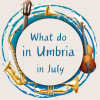What to do in Umbria in July? UmbriaSì tells you
July in Umbria: Music Festivals, Nature and Relaxation
Umbria, the green heart of Italy, transforms into an oasis of music and serenity in July. Its famous music festivals offer unique experiences, perfectly combined with a holiday immersed in nature and relaxation.
Here are our three tips on what to do in Umbria in July

Let yourself be enchanted by music festivals
July is the perfect time to enjoy Umbria’s most iconic festivals, such as Umbria Jazz in Perugia, which brings internationally renowned artists to the city’s historic squares and theaters. If you prefer classical music or contaminations between genres, the Festival dei Due Mondi in Spoleto will win you over with concerts, operas and shows immersed in the artistic beauty of the place.

Relax among hills and green panoramas
After an evening of music emotions, treat yourself to moments of pure relaxation in nature. Walk among the rolling Umbrian hills, enjoy a picnic on the shores of Lake Trasimeno, or choose a farmhouse with a swimming pool where you can recharge your batteries, surrounded by olive groves and vineyards.

Discover Umbria at your own pace
Between events, explore authentic villages such as Assisi, Spello or Gubbio, where time seems to have stopped. For a truly regenerating experience, take part in a light trek in the Sibillini Mountains or visit the suggestive Marmore Falls, perfect for immersing yourself in fresh and regenerating nature.

In Umbria, July is the perfect month to combine a passion for music with the desire to relax and be in touch with nature. Choose this unique land and let yourself be enveloped by the harmony of sounds, landscapes and traditions.
 We are waiting for you in Umbria
We are waiting for you in Umbria 
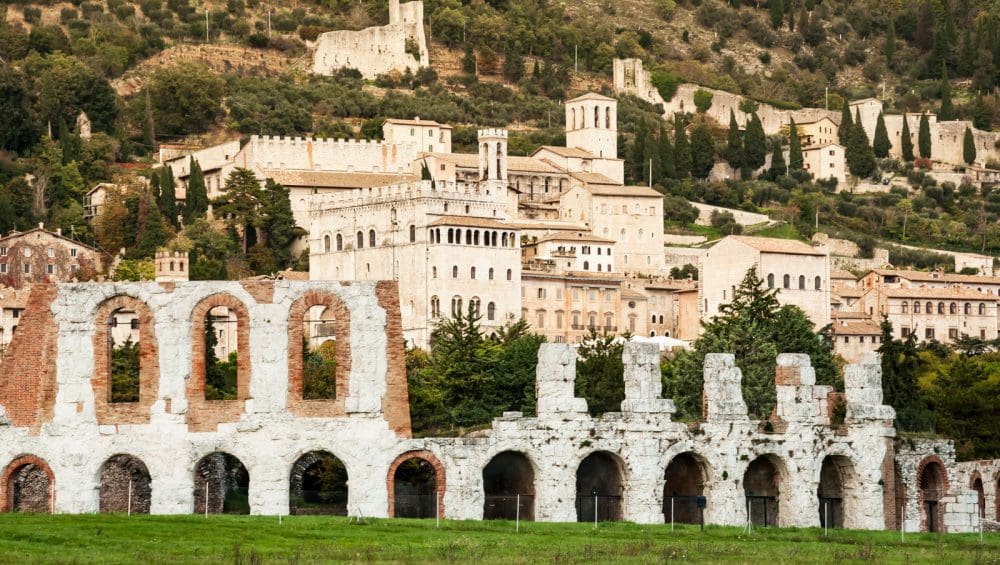
Gubbio a journey through time between history, legends and taste
Imagine walking through ancient stone alleys, with the scent of truffles mixing with the fresh mountain air. Gubbio is a dive into the past, a village that seems suspended in time, ready to give you an authentic experience, between culture, breathtaking views and gastronomic delights.
The day begins with the arrival in Piazza Quaranta Martiri, where our guide will welcome you to reveal the secrets of this unique city. From here, we climb towards Piazza Grande, a terrace suspended between sky and stone, from which the gaze is lost over the Umbrian hills. We visit the majestic Palazzo dei Consoli, guardian of the ancient Tavole Eugubine, evidence of the Umbrian civilization.
But the real spectacle is found even higher up: a cable car ride takes us to the Basilica of Sant’Ubaldo, where an unforgettable view of the city and the history of the patron saint of Gubbio awaits us, protagonist of centuries-old traditions such as the famous Festa dei Ceri.
At this point, the appetite makes itself felt and there is no better way to satisfy it than with a typical lunch in a historic trattoria. Gubbio is the land of the crescia calda, first courses with truffles and succulent second courses, perhaps accompanied by a glass of wine. A journey through Umbrian flavors that is not easily forgotten.
After lunch, our walk takes us to the Church of San Francesco, where the extraordinary friendship between the Saint of Assisi and the wolf of Gubbio is told, a story that still echoes within these sacred walls today. Then, some free time: you can lose yourself among the local craft shops, discover the traditional Eugubine ceramics or let yourself be won over by the typical products to take home as souvenirs.
In the late afternoon, with hearts full of beauty and hands perhaps laden with delicacies, we say goodbye with the promise to return. Because Gubbio is not just a destination, it is an experience that stays with you.
Do you want to discover Gubbio in one day? Contact us for a tailor-made excursion!
 We are waiting for you in Umbria
We are waiting for you in Umbria 

Terni the City of Love and Steel
Do you only have one day to visit Terni? We’ll give you more than one reason to come back!
Morning: Art, history and flavors
Start your day with a stroll through the historic center of Terni. Explore Corso Tacito, among shops and cafes, and stop at the Cathedral of Santa Maria Assunta, an architectural jewel that combines history and beauty.
Continue to the Basilica of San Valentino, the patron saint of lovers. It’s a perfect place to discover a romantic and spiritual side of the city. Touch the tomb of the saint to bring home some luck in love.
Stop at a typical trattoria and let yourself be won over by the flavors of Terni. Try the ciriole alla ternana, similar to strangozzi, they are seasoned with a simple sauce of garlic, oil, tomato and chili pepper., a game dish or a soup of lentils from Castelluccio.
Never end the meal without tasting the dessert symbol of Terni, the Pampepato! A mix of dried fruit (walnuts, almonds, hazelnuts), honey, chocolate, cinnamon and pepper, baked in the oven.
Afternoon: Nature and Wonder
After lunch, head to the incredible Marmore Falls, one of the most exciting natural spectacles in Italy. Walk along the paths that lead to unique panoramic points and enjoy the spectacle of the waters plunging from 165 meters. Let yourself be enveloped by the magic of the sprays and, if you’re lucky, maybe even spot a rainbow. Check the opening times of the water so as not to miss the wow effect!
Evening: Relax and magical sunset
Conclude the day with a visit to Lago di Piediluco, a few kilometers from the waterfalls. This enchanted lake is perfect for relaxing and admiring a fairytale sunset. You can rent a boat or simply walk along the banks, immersed in tranquility. Treat yourself to dinner in a small restaurant on the shores of the lake. Try local fish dishes, such as royal perch, or a pizza accompanied by a good glass of wine. The reflection of the lake at dusk will be the icing on the cake of an unforgettable day. We are waiting for you in Umbria
We are waiting for you in Umbria
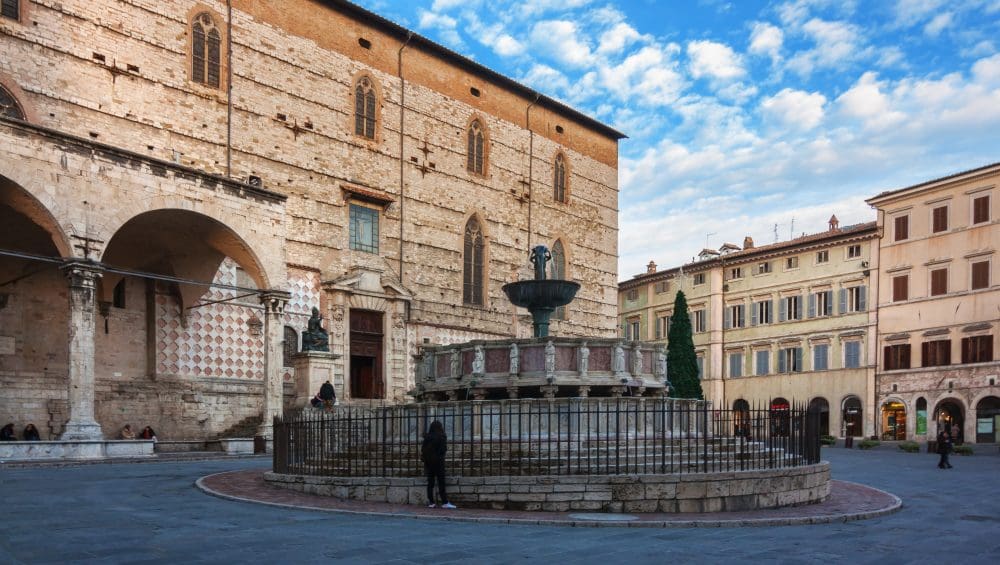
Perugia in one day: a journey through art, history and flavours
Do you only have one day to visit Perugia?
Don’t worry: with our advice, you will live an unforgettable experience in the heart of Umbria. This city, rich in history, art and culinary traditions, is the perfect destination for a getaway dedicated to beauty and taste.
Morning: discovering the historic center
Your adventure begins in Piazza IV Novembre, the nerve center of Perugia. Admire the magnificent Fontana Maggiore, one of the most beautiful medieval works of art in Italy, and the evocative Cathedral of San Lorenzo, with its interior rich in history and spirituality.
Right next to the Cathedral in the Cloister, you can access Perugia Sotterranea, it will be like taking a real journey through the centuries. This experience, little known even by the people of Perugia themselves, allows you to visit the submerged world of the city of Perugia, and learn about the various stratifications: from the Etruscans, through the Romans and the papal settlement, up to the current conformation of the city center.
Also in Piazza IV Novembre, you will find the majestic Palazzo dei Priori, which houses the Galleria Nazionale dell’Umbria.
Here you can admire masterpieces by artists such as Perugino, Raphael’s teacher, and Pinturicchio. If you love art and history, this is an essential stop.
Lunch: authentic Umbrian flavors
For lunch, immerse yourself in the local gastronomic tradition. A typical trattoria is the ideal place to enjoy dishes such as umbricelli with black truffle or torta al testo, a focaccia filled with cured meats and cheeses. If you prefer something more rustic, a platter of local products and a glass of wine will give you an authentic taste of Umbria.
Afternoon: a journey through the past and views
In the afternoon, visit the evocative Rocca Paolina, a true underground city built in the 16th century by order of Pope Paul III. Walking through its underground alleys will be like reliving the Perugia of the Renaissance.
Then, stroll along the Corso Vannucci, the main street of the city, full of shops, cafes and artisan workshops. Here you can buy unique souvenirs, such as hand-painted ceramics, artisanal fabrics or the famous Perugina chocolate.
Take a break. We recommend that you taste the food of the gods in one of our chocolate shops in the historic center.
Before ending the day, stop at Giardino Carducci, a perfect place to relax and enjoy a breathtaking view of the Umbrian valley. From here, the sunset offers magical colors that will remain in your heart.
Contact us to discover every hidden corner, organizing personalized tours, culinary experiences and activities that will make your trip unforgettable.
 We are waiting for you in Umbria
We are waiting for you in Umbria 
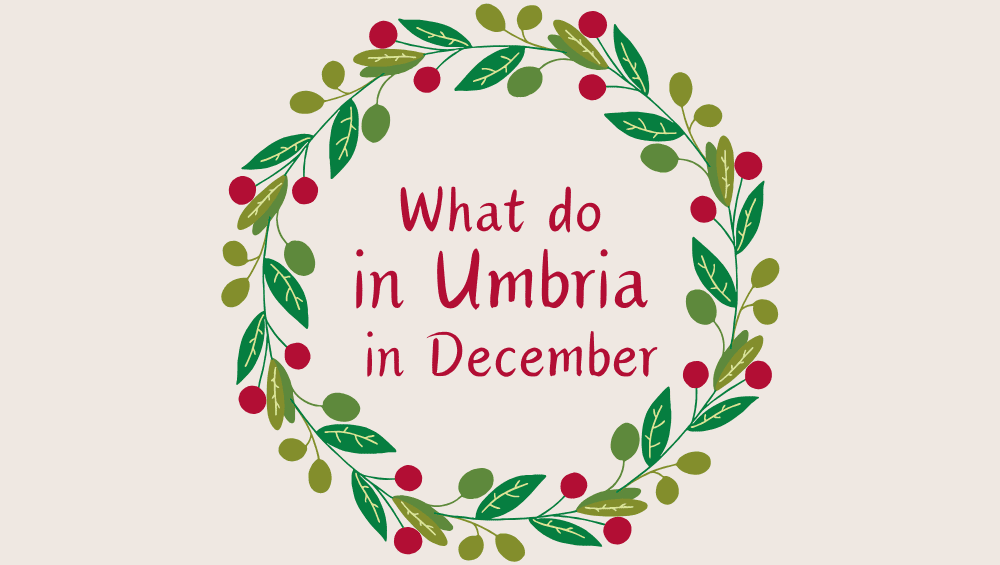
What to do in Umbria in December? UmbriaSì tells you
December is a magical month in Umbria, when the landscape transforms into an enchanting winter scene.
We would love to guide you through a unique journey in this fascinating region, offering you an unforgettable experience during the festive season.
Discover with us what to do in Umbria in December and let yourself be enchanted by this unique destination.

Christmas Markets
Get into the festive atmosphere by exploring the Christmas markets of Perugia and Assisi, Gubbio, Spoleto, Orvieto, Terni
The squares are filled with twinkling lights, colorful stalls and the delicious smell of local specialties. It’s the perfect opportunity to buy unique gifts and taste Umbrian delicacies.

The world’s largest Christmas tree on the water on Lake Trasimeno
The Christmas tree on Lake Trasimeno is a magical tradition that lights up the shores of the lake in December. The tree displays twinkling lights, creating an enchanting spectacle reflected on the water. The lighting ceremony, usually accompanied by festive events, attracts visitors and residents, creating a unique Christmas atmosphere on the shores of this picturesque Umbrian lake. An unmissable experience to immerse yourself in the magic of the holidays in a suggestive context.

The largest tree in the world in Gubbio
It is certainly one of the most impactful Christmas attractions not only for Umbria, welcoming visitors who flock to admire the largest tree in the world from all over Italy and abroad.
Located along the slopes of Mount Igino, it is made up of around 800 lights powered by renewable sources and therefore not only a project with a great tourist impact but also eco-sustainable.

Living Nativity Scenes: Tradition and Authenticity
Umbria is a land of ancient traditions and deep spirituality. With today’s Christmas-themed article, we will immerse ourselves in one of the most significant traditions: the Nativity Scene of St. Francis of Assisi.
This sacred representation is a testimony to Umbria’s cultural and religious heritage, an icon of faith and devotion that attracts visitors from all over the world.

Umbria in December offers a unique experience that blends the magic of the holidays with the beauty of nature and tradition. Trust us to organize your trip, ensuring a complete immersion in the culture, gastronomy and scenic wonders of this fascinating Italian region.
Make your December unforgettable with a trip to Umbria.
 We are waiting for you in Umbria
We are waiting for you in Umbria 

What to do in Umbria in November? UmbriaSì tells you
November in Umbria: The Month of Taste! Our suggestions for an Autumn Holiday
November is the perfect month to visit Umbria if you are a lover of good food, nature and authentic traditions. Known as the green heart of Italy, the region in autumn transforms into a paradise for the senses, especially for food lovers. November is, in fact, the Month of Taste in Umbria, a period in which intense flavors, fine products and local traditions blend into an unforgettable experience.
Here are three tips to organize a holiday in Umbria in November.

Frantoi Aperti: Discover the secret of extra virgin olive oil
November in Umbria is synonymous with Frantoi Aperti, the event dedicated to freshly pressed extra virgin olive oil. Throughout the month, you can visit traditional mills, watch the oil extraction process and taste it fresh on a slice of toasted bread, the classic bruschetta.
Villages such as Trevi, Spello and Bevagna organize tastings, guided tours and activities related to this ancient tradition. This is the perfect time to discover one of the region’s most popular products and learn about the processing techniques passed down from generation to generation. In addition, Umbrian extra virgin olive oil is a perfect gift to take home, an authentic flavor that captures the essence of the Umbrian land.

Medieval Villages and Autumn Atmosphere: Tranquility and Tradition
November is the month in which Umbria’s medieval villages show their most intimate and charming side. With fewer tourists and a relaxed atmosphere, you can explore places like Gubbio, Spoleto and Montefalco enjoying their beauty in complete tranquility.
Walking through the cobbled streets of these villages in autumn is a special experience: the warm colors of the leaves, the soft lights and the fresh air create a unique atmosphere. This is the perfect time to slow down and immerse yourself in the local culture, visit ancient churches, discover artisan workshops and stop in an inn to taste typical dishes of the season.
In addition, many places begin to prepare for Christmas with markets and small events that enrich the autumn experience, offering you a taste of the most authentic and welcoming Umbria.

Truffles and New Wine: Autumn Delicacies
November is the month of authentic flavors in Umbria, in particular of the white truffle and new wine. The region is famous for its truffles, and during this period many festivals and exhibitions dedicated to this precious fungus are celebrated. At the same time, November is also the month of vino novello, a young and fruity wine that pairs perfectly with the typical dishes of the season. The Umbrian cellars open their doors to offer you tastings and convivial moments, where you can discover the secrets of wine production and toast to the flavors of autumn.

 We are waiting for you in Umbria
We are waiting for you in Umbria 

What to do in Umbria in October? UmbriaSì tells you
October in Umbria: When Autumn Magic Embraces the Green Heart of Italy!
Dear lovers of autumn adventures and breathtaking scenery, prepare to be enchanted! Umbria, that little gem hidden in the green heart of Italy, transforms into a true natural spectacle during the month of October. Golden and red leaves paint the landscape. It’s the perfect time to explore this enchanting region.
Here are our three tips on what to do in Umbria in October

Unique autumn atmosphere
The medieval villages of Umbria are tinged with warm autumnal shades, creating a magical atmosphere perfect for walks and relaxation.
Perfect landscapes for trekking
The Umbrian paths become ideal for autumn excursions, with the foliage that paints nature in red, orange and yellow, perhaps savoring the best that this land has to offer
Taste autumn in Umbria
In October you will find many events dedicated to typical products such as truffles, new oil, new wine and chestnuts, where you can taste local delicacies directly from the producers.
💚We are waiting for you in Umbria💚
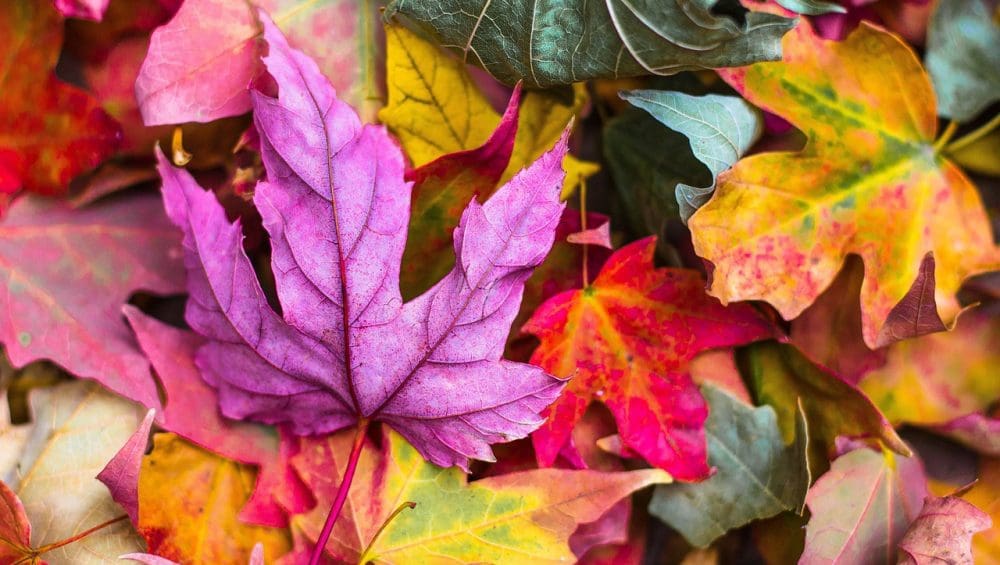
Foliage in Umbria
The Green Heart of Italy warms up with colors in autumn: from September Umbria lights up with red, yellow and orange!
After the summer heat, nature blows its most beautiful colors and, temporarily abandoning the green, it colors before the arrival of winter. Autumn in Umbria is made up of the smell of leaves, of wood burning in the first fireplaces that are lit.
It is the season of harvesting and pressing the olives, then boiling the musts and mills where you can taste the bruschetta with the new oil.
Don’t miss a bike ride along the Strada del Sagrantino, with its purple vines, or a walk in the woods, such as the Bosco di San Francesco in Assisi, where you can admire the autumn foliage, or go with the children to collect chestnut curls in the area of Città di Castello.


What to do in Umbria in September? UmbriaSì tells you
Perfect Climate and Postcard Landscapes: Umbria in September Version
September is the ideal month to discover Umbria, when the summer heat gives way to a cooler and more pleasant climate. The days are still long and sunny, perfect for exploring the picturesque medieval villages, trekking among the green hills, and enjoying the charm of the landscapes that are starting to take on the colors of autumn. Imagine walking among golden vineyards and fields of sunflowers, with the fresh air making every outdoor activity a real pleasure.
Here are our three tips on what to do in Umbria in September

September is the harvest month, a magical time in Umbria when the vineyards are tinged with warm colors and the air smells of must. Participating in events such as Cantine Aperte in Vendemmia is a unique experience: you can visit the cellars, discover the secrets of wine production and participate in guided tastings.
The areas of Montefalco, famous for its prized Sagrantino, and Bevagna, with its white and fruity wines, are ideal for a day dedicated to taste. Don’t forget to taste the local products paired with the wines, such as cured meats, cheeses and bruschetta with extra virgin olive oil


 We are waiting for you in Umbria
We are waiting for you in Umbria 
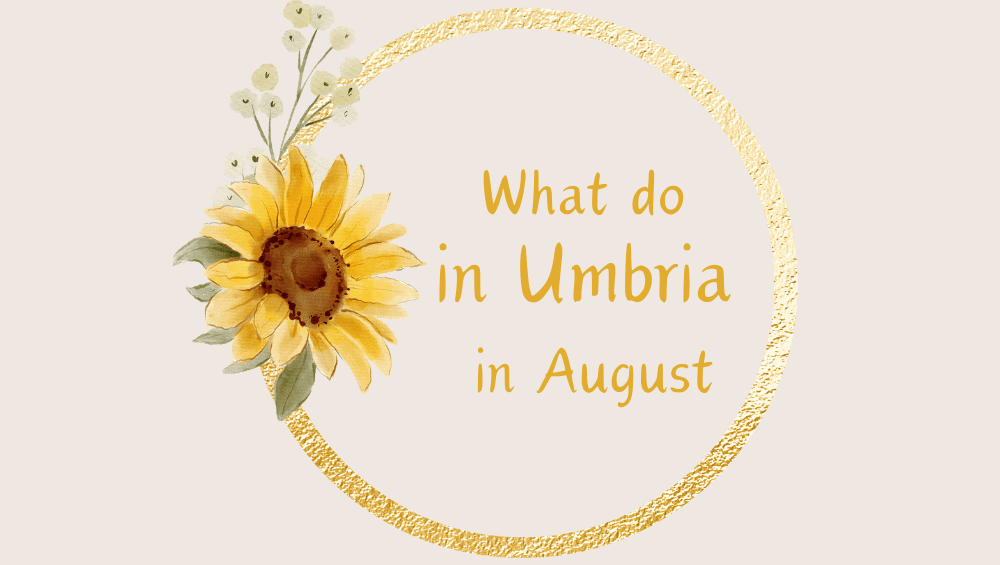
What to do in Umbria in August? UmbriaSì tells you
August in Umbria is a perfect blend of relaxation, adventure and discovery. Between uncontaminated nature, local traditions and cultural events, you will find everything you need for an unforgettable holiday.
Here are our three tips on what to do in Umbria in August

Refresh yourself in nature: rivers, lakes and waterfalls.
In August, Umbria is a perfect destination for a holiday that combines nature, culture and traditions. Hot days can be refreshed by exploring unique places such as the Marmore Falls, where water and greenery come together in a regenerating atmosphere. You can relax on the shores of Lake Trasimeno, enjoying a swim or a kayak ride, or immerse yourself in the clear waters of the Nera River, perhaps experiencing the thrill of rafting or simply enjoying the quiet of these natural places.

Participate in summer events: local culture and traditions.
The month of August is also full of events that celebrate Umbrian culture and traditions. You can attend concerts and shows at the prestigious Festival dei Due Mondi in Spoleto or be fascinated by historical re-enactments such as the Palio dei Terzieri in Città della Pieve, where time seems to go back with costume parades and archery competitions. For lovers of good food, food and wine festivals offer a journey into the authentic flavors of the region, including truffles, wild boar and fine wines.

Experience a slow holiday, away from the crowds.
If you want a quiet and regenerating break, Umbria is the ideal place to discover its relaxed pace. You can stroll through silent streets in medieval villages, where time seems to pass more slowly. August is also the perfect time to treat yourself to a visit to the abbeys and monasteries hidden among the hills, where spirituality and peace reign supreme. Take advantage of this month to immerse yourself in the small pleasures of life, such as enjoying a coffee in a quiet square or walking through the vineyards, enjoying the view without haste.
 We are waiting for you in Umbria
We are waiting for you in Umbria 
Commenti recenti
- A Taste of Umbria 5
- Accomodations 107
- Activity 9
- Attività 2
- Blog 41
- Christmas in Umbria 0
- Consigli 10
- Culture 9
- Events in Umbria 4
- Experiences 15
- La Contessa: a door between land and sea 36
- Mystic Umbria 5
- News 9
- Outdoor 3
- Packages 30
- Recipe 8
- Taste 3
- Tips 16
- Umbria A Journey through Time 10
- Umbria Beactive 11
- Umbria For Family 7
- Umbria Jazz 6
-
Umbria Jazz 7 July 2025
-
What to do in Umbria in July? UmbriaSì tells you 25 June 2025
-
The Lace Makers of Irish Lace on Isola Maggiore 25 June 2025
Via Settevalli, 320
06129 Perugia
Iscriviti per ricevere informazioni su pacchetti, offerte, eventi e manifestazioni in Umbria.
Privacy and Cookie Policy | Credits: GREEN CONSULTING
UMBRIAPERTA: BANDO PER IL SOSTEGNO ALL’ATTIVITÀ DI INCOMING” NUOVO PIANO DI SVILUPPO E COESIONE FSC”
Intervento relativo al Progetto “UmbriaSì per l’Incoming” è stato realizzato e finanziato con RISORSE FSC
La funzionalità del sito web è stato implementa con il sostegno delle risorse del Nuovo Piano di Sviluppo e Coesione FSC




